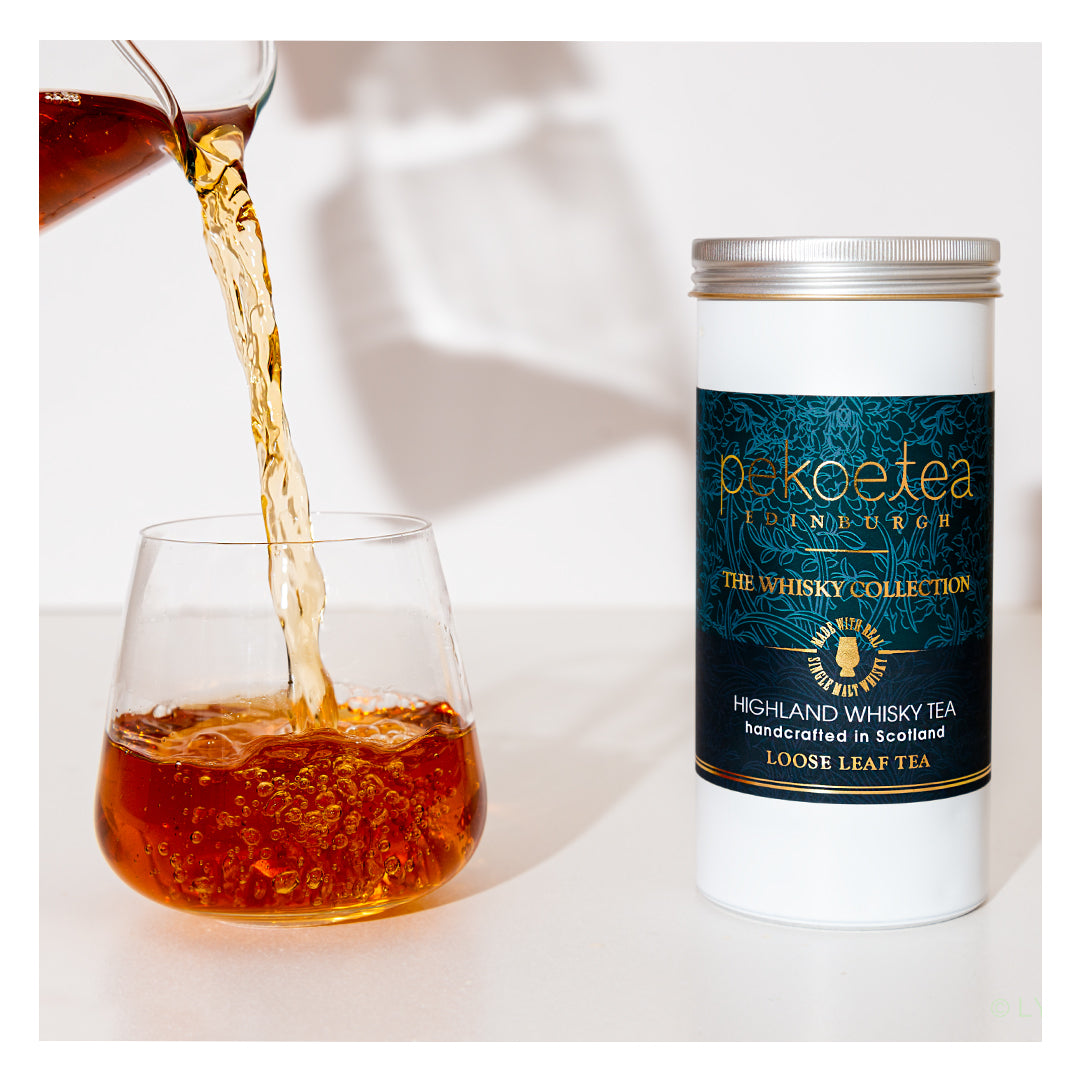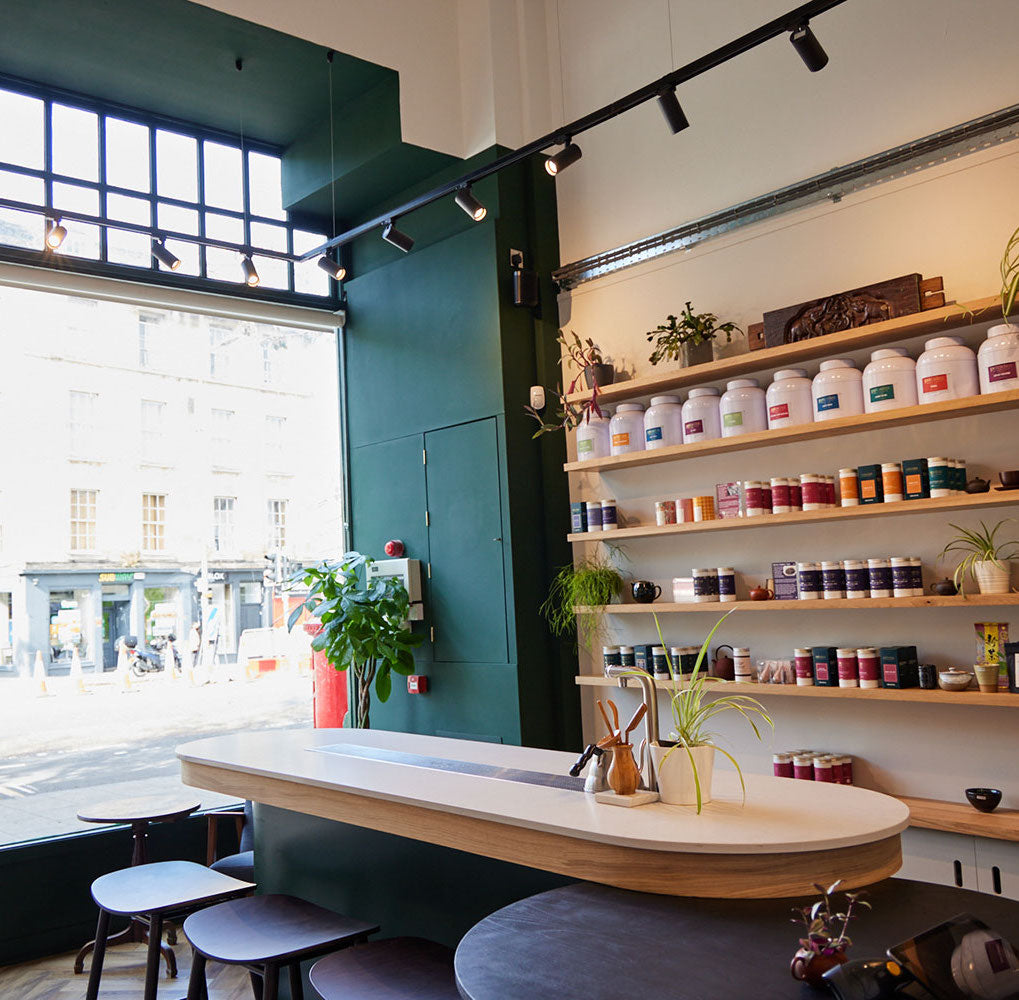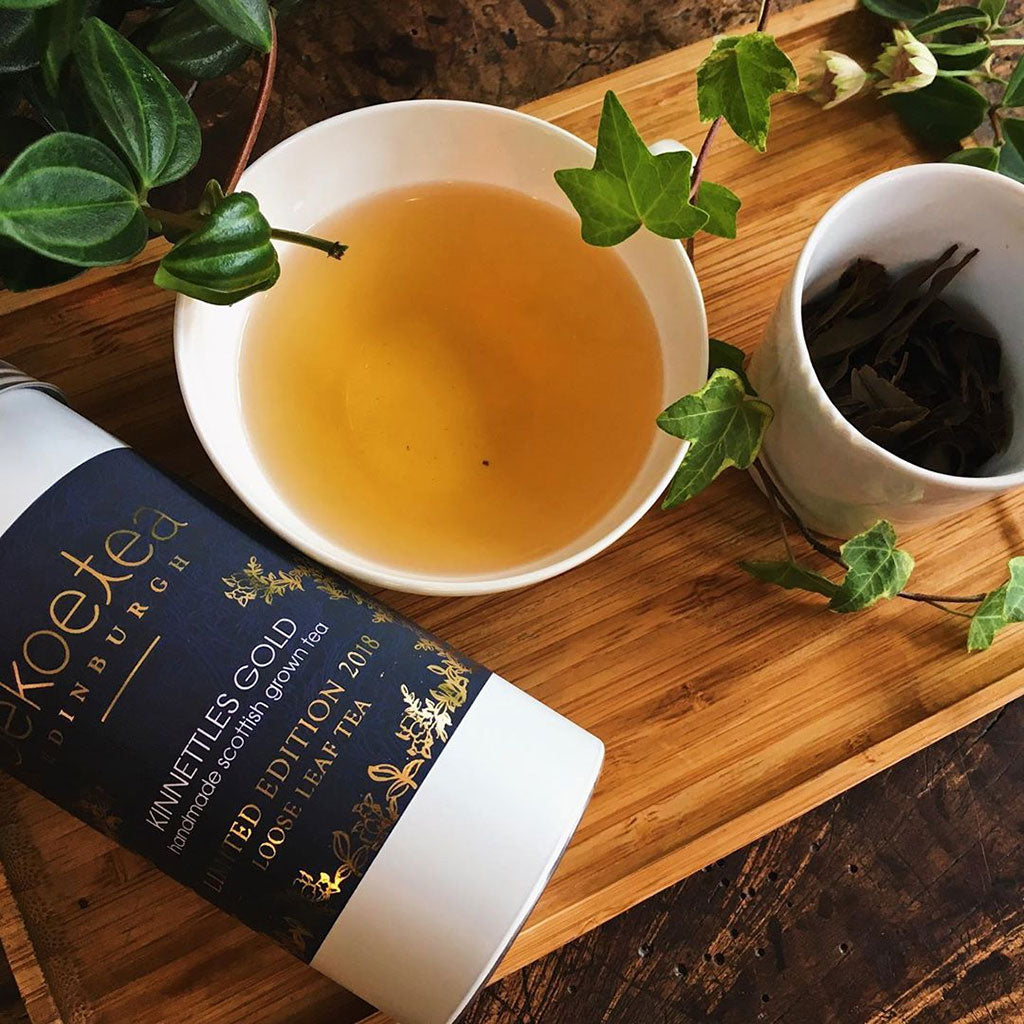As the region that the tea plant originally comes from, Yunnan Province has a wide variety of different varietals and cultivars, as well as a diverse tea culture that all combine to give very different results in different teas. Although pu-erh tea is currently Yunnan's most famous product, focusing only on those teas would do a disservice to the rest.
Here are our top five selections from Yunnan Province, presented in no particular order as it is really impossible to rank them except to say that these stand out from the crowd in their own ways.
Ai Lao Hongcha
Grown on the high slopes of Ai Lao mountain, this is one of Yunnan's highest altitude black teas. The plants grow so high up that their leaves are almost always kept moist by mist and dew, while still being able to benefit from high altitude sunshine.
The result is a particularly tender leaf that is then oxidised slowly, stopping short of fully oxidising the leaf. Each tea cultivar has an ideal amount of oxidisation that most benefits the flavour of the leaf, and part of the skill of the tea master is knowing how much oxidisation is enough and knowing when and how to stop it. Hongcha means 'red tea', a heavily oxidised but not fermented tea. This broad category is known in the west as black tea.
For Ai Lao, the ideal level of oxidisation is fairly high, but still with some light greenness to the leaf. Only the buds and top leaves of the early spring harvest is used to make Ai Lao Hongcha, and in some ways it mirrors the first flush darjeelings from northeastern India, although with more oxidisation than would usually happen in a darjeeling.
The tea's aroma is rich and reminiscent of a malty Indian Assam tea. When infused, it gives off an interesting woody scent with hints of fruit jam.
The flavour is of course the most important thing, and here the Ai Lao gives a fascinating combination of black tea style maltiness with fruity and floral notes that would be more familiar to oolong drinkers. The fruity notes are jam-like, with some describing them as resembling lychees or other tropical fruits. The real distinction of the Ai Lao is its long lasting aftertaste, persisting for minutes after drinking.
Liu Bao Heicha

Although not from Yunnan Province, this fermented tea is very closely related to some of the finest and most famous Yunnan teas. Grown and processed in neighbouring Guangxi Province, Liu Bao is one source of the inspiration behind the ripening process used to manufacture shou pu-erhs.
The traditional wet piling and storage methods used to ferment and age Liu Bao teas have been used for centuries, and the lessons drawn from them in the 1960s allowed tea factories in Kunming and Menghai across the border in Yunnan to develop robust and successful techniques suitable for pu-erh. The exact culture of bacteria and yeast used in each factory, and each location making Liu Bao, is unique and a closely guarded secret, ensuring each one maintains a unique flavour profile.
Despite the similarity in techniques, Liu Bao tea is very different from most pu-erhs, giving a much more woody aroma and infusing to a rich, forest-floor flavour with notes of mushroom. This unique flavour profile combines all this with the earthy taste familiar to pu-erh drinkers, and like pu-erh it gives a smooth mouthfeel, although with a refreshing aftertaste more similar to sheng pu-erhs than to ripened ones.
Moonlight White
Sometimes considered a white pu-erh, Moonlight White (Yue Guang Bai) is made from buds picked from old growth tea trees around Yunnan Province. The name comes from the unusual practice of withering the leaves in open air but at night, rather than under the sun.
Visually, the tea resembles the famous Fujian Province Silver Needle (Baihao Yinzhen) white tea. The leaves are long, rolled up and are covered in a fine white down known as pekoe, often taken to indicate quality. Moonlight White was inspired by the methods used in Fujian Province to produce Silver Needle style white teas, taking Yunnan Province teas and putting them through the same processes as used in Fujian.
With these loose Moonlight White teas, the process is simply the white tea method of withering the leaves, leaving them to oxidise for the required time as judged by the growers and then baking them to stop the oxidisation process at the ideal point. These teas can be described as Yunnan Province white teas, although some have called them white pu-erhs. The distinction is perhaps in whether or not the tea is subject to further ageing. Some Moonlight White style teas are pressed into beengs and left to allow the flavour to mature, a common process in other pu-erh teas.
Regardless, the tea itself is excellent, with a light, stone fruits aroma coming from the dry leaves and a naturally sweet, refreshing flavour when infused. This tea also gives an excellent result when cold-infused. To do this, simply leave it to infuse overnight in a flask. Storing it in the fridge until drinking it makes a refreshing cold drink that would be ideal in the summer months.
Jing Mai Ancient Trees
Grown on the slopes of Jingmai mountain in Yunnan's far southwest, this is an excellent example of a sheng, or unripened, pu-erh tea. Jingmai mountain is mostly inhabited by the local indigenous Dai people, who have unique traditions around tea preparation and cultivation. The region is known as one of the nine mountains of Lancang County, which together make one of the most important and best-regarded regions growing pu-erh tea.
This tea gets much of its unique quality from the ancient wild growth tea trees it is harvested from. Some of the trees used to make this tea in particular are centuries old, and the region is home to a few truly ancient tea trees thought to be more than a thousand years old. The cultivation methods are organic and biodynamic, working with the famously lush Yunnan ecosystem to create wonderful tea rather than fighting against it with intensive agricultural processes.
The result is a tea that starts out with a strong astringent flavour in the first infusion, but that develops over repeated infusions. The flavour changes, releasing fruity flavours followed by floral notes that resemble jasmine in the later infusions. This potential for multiple infusions is not unique to sheng pu-erhs, but they are often the best teas to re-infuse and not putting Jing Mai Ancient Trees through at least three infusions would mean missing some of the best aspects of its flavour.
Pu-Erh Special Grade
 As an example of a loose leaf shou, or ripened, pu-erh, this Special Grade Pu-Erh is outstanding. It is a good choice to start with if you are new to pu-erh teas in general, being easy to drink and lacking any astringency or unusual flavour notes that are unfamiliar outside of pu-erh.
As an example of a loose leaf shou, or ripened, pu-erh, this Special Grade Pu-Erh is outstanding. It is a good choice to start with if you are new to pu-erh teas in general, being easy to drink and lacking any astringency or unusual flavour notes that are unfamiliar outside of pu-erh.
Instead, it carries a mellow, rich taste with a thick body, a smooth mouthfeel and the characteristic warming earthiness common to pu-erh teas. The aroma is dominated by this earthiness, and a lingering aftertaste continues for minutes after the tea is finished. The tea infuses to a dark, almost black colour, looking more like coffee than most teas at a casual glance. This is why pu-erh and similar fermented teas are known as black teas in China, with the broad category known in the West as black tea being referred to as red tea in China.
A good ripened pu-erh like this one is aged for a while after it has been put through the artificial ripening process - this airs out some of the musty mushroom flavours that can build up and avoids any of the fishy aftertaste that can sometimes occur in lower quality examples.
In China itself, as well as in many neighbouring countries, ripened pu-erh is considered an ideal drink for the winter months. It has a reputation for promoting general good health, but regardless of the truth of that, it has a pleasant warming effect that is traditionally enjoyed during the cold winters of Northern China. Most pu-erhs will display flavours that are generally warming, but this improves with age and the ripened teas are much more accessible than the carefully aged vintages.
Our Special Grade Pu-Erh has been ripened and then aged for four years to round off the process and air out the flavour.
Yunnan Golden Tips
 This is another excellent black tea from Yunnan Province. Like many of the finest teas, Yunnan Golden Tips is harvested during the early months of the growing season, with only the young leaves and tender buds selected for use in this high grade tea. The name 'golden tips' refers to the buds, which take on a gold colour after the tea is oxidised, and stand out when seen against the dark background of the majority of the dark tea leaves.
This is another excellent black tea from Yunnan Province. Like many of the finest teas, Yunnan Golden Tips is harvested during the early months of the growing season, with only the young leaves and tender buds selected for use in this high grade tea. The name 'golden tips' refers to the buds, which take on a gold colour after the tea is oxidised, and stand out when seen against the dark background of the majority of the dark tea leaves.
The result is a tea that carries a mild aroma in dry leaf form, but that infuses to a rich orange-red colour in the cup, giving a rich, malty flavour that combines the traditional black tea maltiness with spicy notes, a natural sweetness and a smooth mouthfeel.
While many Yunnan black teas serve as the base tea in blends, Yunnan Golden Tips is best enjoyed on its own merits, with the flavour standing on its own very nicely.
These five are our choice Yunnan teas, narrowed down from a wider range to give just a quick whistlestop tour of what Yunnan has to offer and a view of some of the best examples from our range. Take a look around to see what else there is, and keep an eye out for updates as we are always bringing new teas into stock as well.













